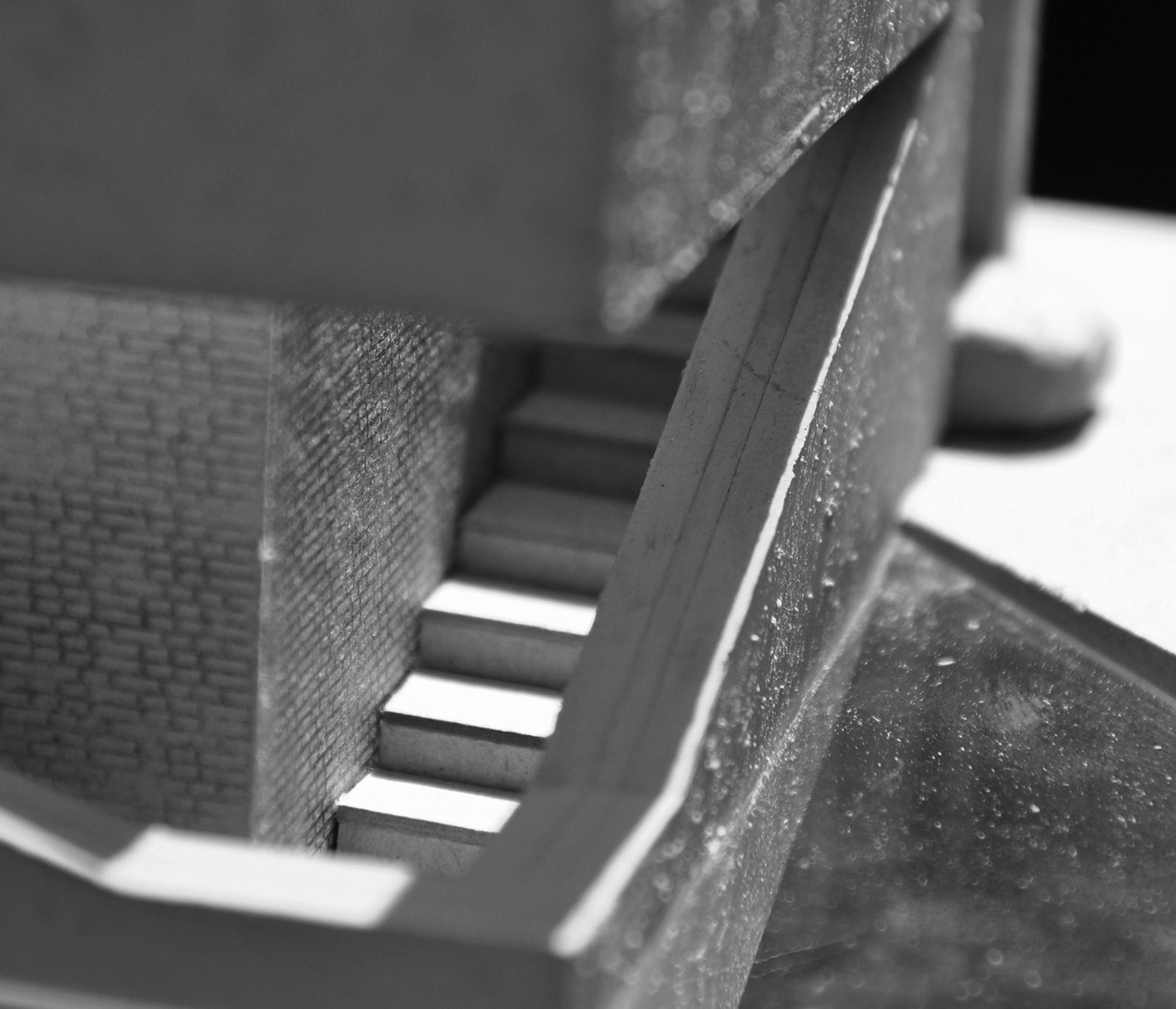Downloads
DOI:
https://doi.org/10.7480/spool.2016.2.1137Abstract
This article explores a site-specific, narrative approach to placemaking in order to reveal ways of reading and reacting to spatial atmospheres. The contribution presents an MSc Architecture project that results in the design of three particular places on the fringes of the Dutch urban landscape by means of utilizing a narrative approach to reading and analysing the existing site-specific atmospheres. The three architectural follies designed within the landscape present opportunities for the insertion of narrative through experience, illuminating the contents within the existing context. The intention of the project was to explore how an architectural installation could serve as a locus for the generation of new trajectories of perception and understanding. Through a sequencing of events within each landscape folly, the existing site is revealed to the reader in a new way, establishing new circumstances to engage with the landscape. The implementation of narrative within the processes of placemaking allowed for the overlay of subjective interpretations through personal experience, creating spaces saturated with personal signification and interpretation. The three projects demonstrate the necessity of freedom of imagination and interpretation in placemaking and how a narrative approach to design can allow one to be fully involved in the creation of personal and particular place.
How to Cite
Published
License
Copyright (c) 2020 SPOOL

This work is licensed under a Creative Commons Attribution 4.0 International License.

References
Casakin, H & Bernardo, F. (2012). The Role of Place Identity in the Perception, Understanding, and Design of Built Place and Experience Environments. Sharjah, United Arab Emirates: Bentham Science Publishers.
Coates, N. (2012). Narrative Architecture: Architectural Design Primers Series. Chichester, United Kingdom: John Wiley & Sons Ltd
De Wit, S. (2014). Suburbs and Super-Nature: How the Wasserkrater Exposes an Invisible Landscape. Despoina Zavraka, (Ed.), Urban Blur (pp. 13-23). Thessaloniki, Greece: CND Publications.
Giannotti, E. & Viganò, P. (2012). Our Common Risk: Scenarios for the Diffuse City. Milano, Italy: Etal Edizioni.
Havik, K. (2013). Urban Literacy: Reading and Writing Architecture. Rotterdam, Netherlands: Nai010Publishers.
Havik, K., Tielens, G., & Teerds, H. (Eds.) (2013). OASE#91 Building Atmosphere with Peter Zumthor and Juhani Pallasmaa. Rotterdam, Netherlands: Nai010publishers.
Holl, S., Pallasmaa, J., & Pérez-Gómez, A. (1994). Questions of Perception: Phenomenology of Architecture. Tokyo, Japan: A+U publishing.
Massey, D. (2005). For Space. London, United Kingdom: Sage Publications Ltd.
Norberg-Schulz, C. (1980). Genius Loci: Towards a Phenomenology of Architecture - Theorizing a New Agenda for Architecture: An Anthology of Architectural Theory 1965-1995. London, United Kingdom: Academy Editions.
Pérez-Gómez, A. (2016). Attunement: Architectural Meaning after the Crisis of Modern Science. Cambridge, MA: MIT Press.
Relph, E. (2008). Place and Placelessness: Research in Planning and Design Series (Vol.1.). Pion Ltd.
Rigby, K. (2003). Turning in to Spirit of Place. In Cameron, J. (Ed.), Changing Places: Re-Imagining Australia (pp. 107-115). Haberfield, Australia: Longueville Books.
Sievert, T. (2003). Cities Without Cities: An Interpretation of the Zwischenstadt. London, United Kingdom: Routledge.
Tisma, A., & van der Velde, R. (2014). SPOOL: Landscape Metropolis: Advances in Planning, Design and Characterization of Metropolitan Territories Via Landscape (Vol. 1, Issue 1). doi:10.7480/spool.2013.1.637
Tuan, Y. (1977). Space and Place: The Perspective of Experience. Minneapolis, MN: University of Minnesota Press.
Walter, E. (1988). Placeways: A Theory of the Human Environment. Chapel Hill, NC: UNC Pressbook.
Zumthor, P. (2006). Atmospheres: Architectural Environments - Surrounding Objects (5th Edition). Basel, Switzerland: Birkhäuser.
Zumthor, P. (2006). Thinking Architecture. Basel, Switzerland: Birkhauser.



